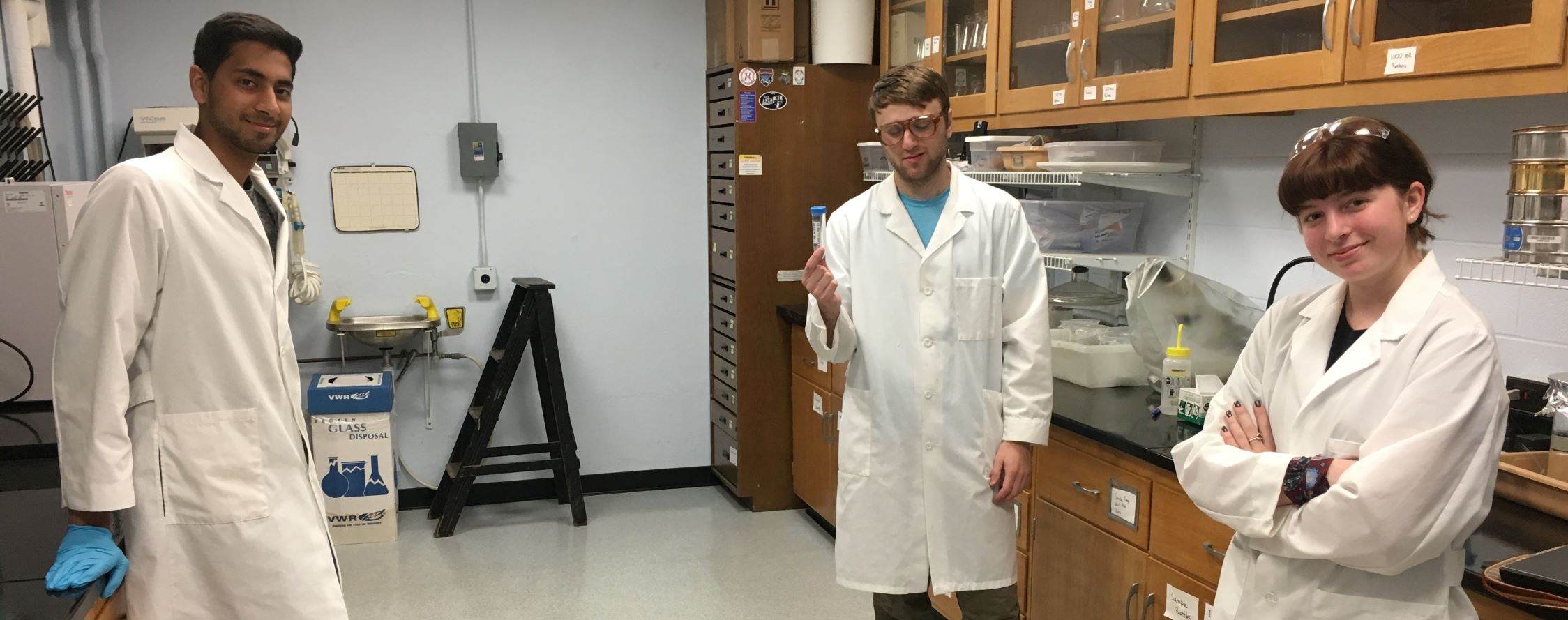Research Overview
Dive Deep. Research in the Department of Earth and Environmental Sciences literally spans the globe, with field locations on all seven continents. From the top of the Alps to volcanoes on the ocean floor, our faculty, undergraduates, and graduate students are uncovering exciting new insights on the mysteries of Earth’s structure, processes, and systems.
Research Overview
EES focuses on four primary research areas:
- Solid-Earth dynamics: transport, reaction, and evolution of fluids and magmas in the crust
- Life processes: Earth’s record of life, ecology, and the adaptation to changing climate and environment
- Surface and atmosphere dynamics: processes governing Earth’s thin, life-sustaining sphere of air, water, and sediment
- Coupled human-environment interactions: the complex and dynamic intersection of Earth processes and human activity
Ongoing research projects by EES faculty are located in the southwestern United States and Pacific Coast, the Appalachian Mountains, Bangladesh, Peru, Brazil, New Zealand, Iceland, Australia, Sri Lanka, and Antarctica. Undergraduate students are active participants and contributors to research projects, including field work, laboratory experiments, and computer modeling.
Research Opportunities for Undergraduates
The department encourages all undergraduate majors to undertake a research project as part of the Honors program or through an independent or directed-study course. Most majors take advantage of this opportunity. Students work closely with faculty members and other students on research projects. This outside-the-classroom interaction is one of the most important features of our academic program.
Interested in working with a faculty member on their research? Just email them or knock on their door! Our faculty love to discuss research opportunities with students.
CURRENT AND RECENT UNDERGRADUATE RESEARCH
The projects listed below are/were supported by the Vaughan Undergraduate Assistantships, National Science Foundation grants to faculty members, or the Vanderbilt University Summer Research Program. Those marked with an asterisk were presented at a national or regional meeting of the Geological Society of America or a session of the American Geophysical Union.
- Amelia Baran (2020): Feldspars as a Record of Magmatic and Volcanic Processes at Akaroa Volcanic Complex
- Lila Johnson (2020): A new record of a Late Triassic ichthyosaur with Jurassic-like dentition revealed by micro-CT scanning
- Liam Kelly (2020): Modeling heat extraction from magma bodies at depth in the Central TVZ
- Thomas Maertens (2020): White-Lipped Peccary effects on forest structure and diversity
- Andrew McKinnis (2020): A Preliminary Report: Ice Shelf Velocity Visualization Using the Community Ice Sheet Model (CISM)
- Hannah Salaverry (2020): Last millennium aragonite speleothem trace element record of water flow and prior carbonate precipitation
- Maggie Syversen (2020): Fluid dynamics of the Enigmatic Ediacaran Organism Pteridinium
- Yiruo Xu (2020): Investigating the applicability of speleothem strontium isotope paleo-precipitation proxies in coastal California
The following senior Honors theses were presented in spring 2019:
- Madeline Allen: Evaluating Flood Resilience in Rural Communities: Case-Based Assessment of Dyer County, Tennessee
- Umang Chaudhry: Gentrification and Access to Public Transit in Nashville, TN
- Andrew Grant: Aerosol Salt Accumulation: An inexpensive and technically simpler tool for soil chronologies in Ong Valley, Antarctica
- Melissa Halstead: Visible signals of white-lipped peccary influence on nutrient cycling
- Matthew Martin: Four or More is a Crowd: Assessing Competition Between Australian Dasyurids Via Dental Microwear Texture Analysis
- Andrea Richardson: Geologic map of the Northeastern Unicoi and Northwestern Iron Mountain Gap Quadrangles, Tennessee Appalachians
Research Resources and Locations
Earth and Environmental Sciences is housed in Vanderbilt’s natural science complex and shares analytical equipment with the College of Arts and Science’s Chemistry department and Vanderbilt’s School of Engineering. Experimental and analytical facilities are readily accessible to graduate students. See the Research Facilities page for more information.
